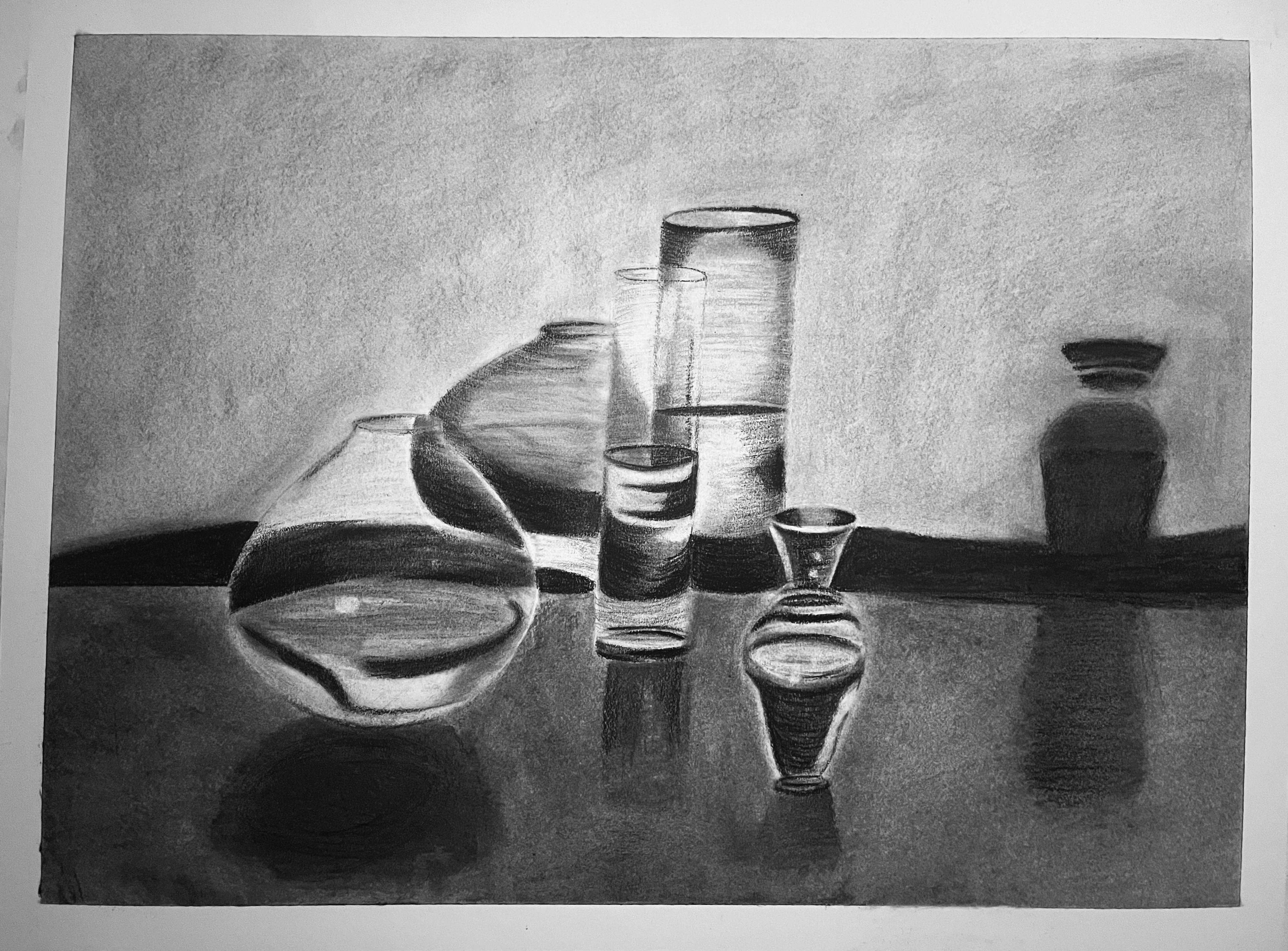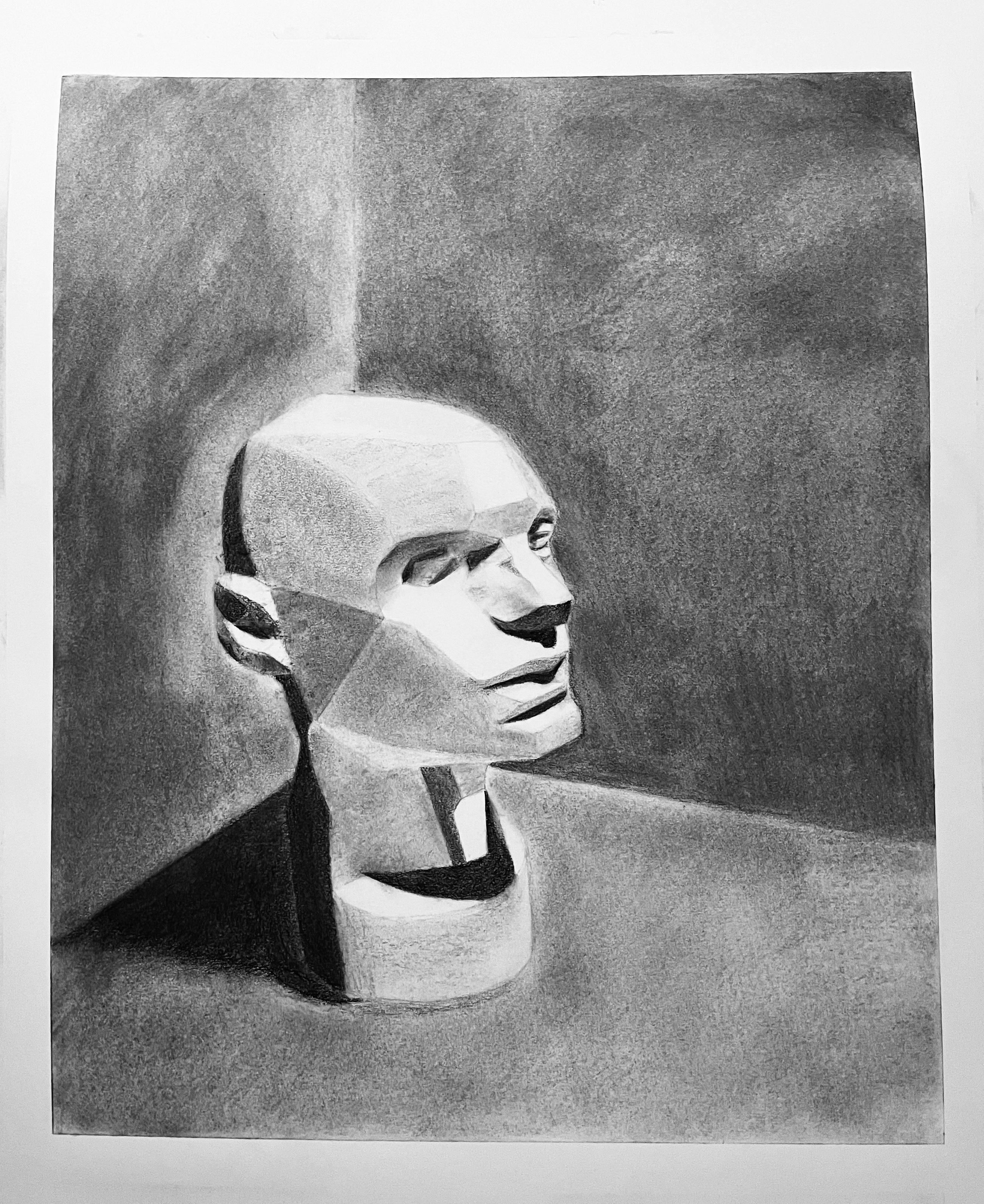
What you’ll practice
You’ll build an even value ramp, then blend simple spheres and cylinders to understand edge behavior. The key is gentle layering and crisp re-statements—not smearing.
Tools & papers
- Vine charcoal (lay-ins) + compressed charcoal (darks)
- Charcoal pencil (HB–2B range)
- Blending stumps (large & small) / soft tissue / brush
- Kneaded eraser (lift) + vinyl eraser (clean edges)
- Paper: smooth drawing paper or newsprint for drills
- Workable fixative (light mist)
Setup & habits
- Work at a slight angle; keep hands off the drawing area.
- Reserve one stump for lights, one for darks to avoid mud.
- Blend in the direction of form, not random circles.
Step-by-step
Lay in a value ramp
From light to dark in 6–7 steps, hatch lightly with vine charcoal. Aim for even spacing; don’t blend yet.
First blend pass
Using a clean stump, make one light pass per step. Wipe the stump on scrap between values to prevent carryover.
Re-state values
Reapply charcoal to deepen the darks and correct mid-steps. Repeat a light blend if the jumps feel uneven.
Blend basic forms
Shade a sphere and cylinder with hatch following form. Blend with the form using stump or soft brush; lift a clean highlight.
Edge control
Sharpen cast-shadow edges with a vinyl eraser; soften turning edges with a very light stump pass. Keep both in play.
Fix lightly
Mist workable fixative from 12–16"; let dry. Re-state accents if the fix softens them.
Tips
- Less pressure blends cleaner. Build in layers rather than one heavy smear.
- Brushes make super-soft transitions; stumps give more control.
- Never blend the brightest lights—let the paper keep sparkle.
Troubleshooting
- Muddy greys: Dirty stump—wipe often; separate stumps for light/dark.
- Chalky highlights: Over-lifted—re-tone with soft hatch and re-blend lightly.
- Banded ramp: Steps too far apart—add intermediate layers and feather transitions.
